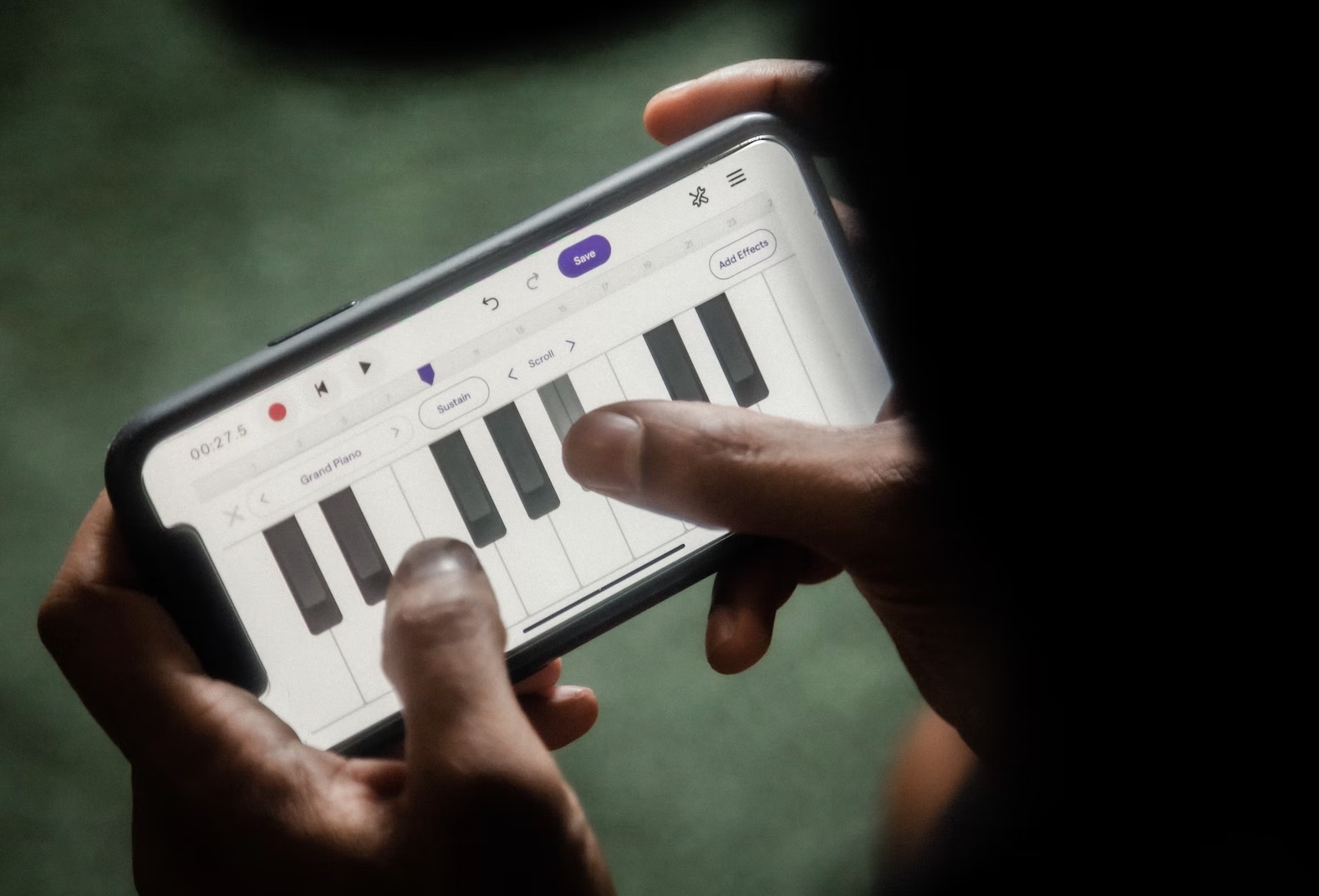An engaged student is not only a happy student, but also a productive student. Knowing how to increase student engagement is a huge deal for most schools and educational establishments. In virtually every scenario it improves results and behavior.
In this guide, we explore how to increase student engagement with some tried-and-tested methods. Within a school or educational establishment it is always a good idea to embed a culture that is conducive to engagement.
Why Worry About Student Engagement?
According to Washington University, “Research has demonstrated that engaging students in the learning process increases their attention and focus and motivates them to engage in higher-level critical thinking.”
There are plenty of reasons to consider student engagement, including:
- Better behavior. Engaged students tend to be much more focused and well-behaved, and this can also rub off onto other students.
- Less disruption. It also follows that there is less disruption in the classroom, if students aren’t engaged then they will go looking for fun. This may mean that they get distracted or mess around.
- Better results. Engaged students learn more. This is a very simplistic way of looking at it but we all know it to be true from personal experience. It is easier to learn when you are interested.
- More fun for everyone. Teachers would rather teach an engaged class, and students would rather be in one.
Below, we’ve got some tips for engagement, including practical tips of things you can introduce like piano lessons and music, sports, and even clubs within schools.
There are certain activities, such as music lessons, that can serve to increase student engagement a huge amount. They have something to focus on and enjoy, but they are also learning at the same time. Music lessons have been proven to have numerous benefits and even help cerebral development. Introducing a band practice or piano lessons could even help kids with their math exams!
Below, we’ve also got some tips on how you can improve the culture within the school. The culture and approach can make all the difference.
A Culture of Engagement
The culture runs right through any establishment, including educational establishments. This needs to be passed down from the very top, so headteachers and even superintendents and regional bosses need to take the correct attitude.
Get Recruitment Right
Because so much depends on the people who are involved, recruitment is essential. When employing new teachers, or even support staff, make sure that you are vetting them thoroughly. Teachers should not only be qualified, but passionate. They should have the drive to come into your team and help students to stay engaged.
Give Teachers Freedom
Once you have recruited the right teachers, it is time to let them devise a strategy to get students ready for exams, but also to help them to learn in an engaged way.
If a teacher has to rigidly stick to a curriculum, it can get very boring for them. This also means that the lessons they deliver are likely to be more boring for students. You can help them out by giving them the freedom to devise lesson plans. If a teacher wants to approach things in a certain way, it is a good idea to let them, just as long as they end up getting the same end results.
Of course, some subjects have more freedom than others, and in certain topics, teachers should always teach certain basics. You want to give young people the best possible footing in subjects like math and science.
Allow Students to Have a Say
It makes perfect sense that children have a say in their learning. A lot of kids know what they enjoy and what they don’t. Try to incorporate the feedback of young people and let them have a say in how school is run. Of course, you need to provide structure and not give them too much freedom here. They are still children and there is a chance they will go too far. However, kids are capable of giving feedback and having a say on what is working and what they like.
Give Children Choices
A lot of the subjects and extra-curricular activities are also easier than ever to learn. With a few computer workstations and a Pianu membership, you can allow children to engage in piano lessons. If you have a teacher or parent willing to coach a sports team you may be able to offer soccer practice or another sporting activity. These sort of things go a long way to helping your children enjoy the school day.
A baseline of Math, English, and Science is always a good idea for students but beyond this there is a level of choice. Kids can choose whether or not they want to take part in certain activities, and the ones that they aren’t interested in at all may not be crucial.
Encourage Teachers to Be Practical and Demonstrate
Kids learn in a lot of different ways. This means that you should try your very best to deliver different kinds of lessons. For instance, one kid might learn perfectly by reading through a textbook, but another child might only learn the same lessons by watching a demonstration. You should allow practical lessons as much as possible.
Some children will never engage fully when reading from a textbook. Some need to get their hands into something and physically engage.
Make Lessons Meaningful
According to Promethean: “Research has shown that if students don’t deem a learning experience as worth their time or effort, they’re much more likely to lose motivation or even disengage completely.”
If you can provide your students with a reason why they are learning something, they are more likely to engage. We all remember learning elements of math or science and wondering how we would use it in real life. The truth is that we do use a lot of the knowledge from school once we are adults. Explaining how it has a practical use can be all it takes for kids to switch on more.
Understand Children’s Attention Span
Kids do not have long attention spans. The idea of putting a child in a room for hours and not giving them breaks or helping them let off steam is not helpful to their education. Instead, break up the learning into productive but short spells.
The following is a rough guide on the average attention span by age. This means you need to consider giving kids a break and dividing their learning up into shorter lessons. A child the age of six is not going to be able to sit in a room for an hour reading from a textbook. At least, they are not going to be actively engaged in this.
2 years old: four to six minutes
4 years old: eight to 12 minutes
6 years old: 12 to 18 minutes
8 years old: 16 to 24 minutes
10 years old: 20 to 30 minutes
12 years old: 24 to 36 minutes
14 years old: 28 to 42 minutes
16 years old: 32 to 50 minutes
Of course, these numbers can vary, and are just based on averages. Every child develops differently.
Set Goals
Goals provide a target to work towards. It is possible that both kids and teachers will benefit from goals. Having a target for the day, the week, or the term can hugely impact engagement. Without something to work towards, kids are more likely to float through the working day.
Don’t Pressure Grades
This is where a lot of schools go wrong. They put a lot of pressure on the grades, and this passes pressure to students and to teachers. Good grades are important, but the way to get them isn’t by adding pressure. Focus on your goals and the processes of learning. Ask how you can improve this. How can you make kids more engaged in the actual lessons? This is one of the keys to improving the grades.
Focus on Relationships
Good relationships within a school or educational environment are also so important. A lot of us remember a teacher that we came across or worked with when we were young. Maybe they took the extra time to help us and understand us.
On top of this, relationships in the classroom and the dynamic between students is crucial. Cultivate a culture of respect and set clear boundaries when it comes to behavior. If a child is being bullied or is in a classroom where they don’t feel comfortable they are not going to engage.
Take the time to build relationships within the school. Allow the students the chance to get on together, learn together, and get to know each other.
Have Boundaries
Sometimes at school, children mess around. This is a tale as old as time. Unfortunately, there are going to be times when it gets in the way of teaching and learning. One of the best things to do is to ensure you have clear boundaries. Everyone should know what is not acceptable when it comes to not doing what is asked as well as distracting others.
It is also important to support those who are being disruptive, not just discipline them. There are many reasons why they might not be engaged and often these are the young people that need the most help in school. Boundaries are important in pretty much every aspect of life.
Consider Teaching Based on Different Ability Levels
This is difficult, as you certainly want to give everyone the same opportunities within the school environment. However, if a child has a higher ability level then the things you are teaching other students may not be suitable for them. This can cause them to struggle with engagement.
A lot of schools split students based on ability levels, and it could be that you provide a more advanced class for the young people that need it. This way, the sort of lessons you are teaching
Activities That Help With Engagement
If you are researching how to increase student engagement there are a lot of different activities that you should have up your sleeve, ready to use. Some of these might be one-time things, others might be ongoing.
Let’s dive into some of the practical tips that can help you to keep your kids engaged, and things you can plan and do with children to assist them.
Provide a Creative Outlet
We believe that creativity is absolutely crucial. Most parents and teachers agree that kids should have some way to be creative. It can help them to express their feelings, as well as develop their brains and even just let off some steam. Many children need some form of creative stimulation. This could be an art class, or it could be music. There are many creative activities out there.
On top of this, creative thinking can help children to take a different approach to things like problem-solving. The benefits of creativity are wide-reaching.
Provide Regular Breaks
A school will have a recess or break time included within the day. However, sometimes this is not enough, especially for younger children.
Break up your lessons. If it is a 50 minute lesson, even this might be too long for some kids. A great way to break it up is to stop and play a class game or encourage an activity between students. This can also help you to build up relationships which can further help engagement.
It isn’t realistic to ask children to keep working all day, their brains aren’t capable of it and they will get distracted.
Organize Trips
Some of us still remember the field trips we used to take at school 20, 30, even 50 years afterwards.
Field trips are stressful for teachers and take a lot of planning, plus permission slips. However, they are a really valuable activity. Kids love to get out and see interesting things, so whether it is taking them to a show, or going to a workplace for a tour. This can all form part of a child’s education and though it takes effort it is worthwhile.
Get Kids Moving
Kids need to let off steam, and sitting at a desk for hours is an idea of torture for some children. Try to help them out by getting them moving around.
This might be something as simple as getting all of the class to stand, asking a yes/no question, and getting them to move to one side of the classroom to give their answer. “Yes” on the left, “No” on the right. It may seem silly and irrelevant but it is not, this is a way for children to get off their feet and break up the monotony of a lesson.
Encourage Friendly Competition
A bit of competition can definitely help with motivation and accountability, but only if it is done right. This means no shaming of underperforming students, and ideally the competition should measure improvement rather than grades.
You can also split your students into teams for some of the competitive tasks, and as long as it is friendly and respectful this can be a great way to aid learning and engagement. A bit like how we all tend to get a bit competitive when it comes to a quiz.
Use Games and Sports
Games and sports tick a lot of different boxes when it comes to helping with engagement. For one thing, they are a great way to provide a break from the classroom. Nobody can stare at screens all day or work from a desk without getting the urge to go outside or to do something different. The same is true for kids, in fact, it is much more of an issue for young children.
Games and sports are a great way to keep kids active and keep them motivated, and most of the time, they enjoy it.
This is where it is a great idea to provide kids with more choice, too. Not all kids will enjoy softball so it is a good idea to let them play other sports, like soccer and tennis. If you have enough resources to give them a choice then that is likely to aid engagement.
Encourage Debate
Debate is another skill to learn and something that can also greatly help with engagement. Debate is about having opinions, and getting children talking.
As well as being a way to let kids have their moment of giving their opinion, it can also teach teamwork and it certainly helps to teach social skills. It is a great way to also teach everybody to be respectful of one-another’s opinions.
Certain subjects lend themselves to debate perfectly. In an English lesson, for instance, you may ask students to interpret a poem or a book, and debate their opinions.
Gamify Learning
Pianu is a wonderful example of how to gamify learning. While kids are engaging with our academy, it feels like they are playing a game, like they would on their Xbox or Playstation. Gaming has a culture of “achievements” and this is replicated in the Pianu app.
Any opportunity that you can use to make things a game may help kids engage. It certainly provides them with a different outlook. Kids might think of the lessons as fun and not have the attitude of a boring lesson ahead of them. Games can be as simple as voting on what you think the correct answer to a question is.
Gamifying also includes a lot of ways to tie in rewards and help students with motivation. This guide to gamification should help you to turn your curriculum into something fun for kids.
How Pianu Can Help With Engagement
How to increase student engagement? Music can certainly be one answer. It’s not the only option but it is tried and tested.
Pianu is one of many different activities that you can introduce into schools to help with engagement. For minimal upfront investment, it is possible to give your students the chance to learn a valuable skill in piano.
Music lessons can be a chance to switch off, a change of pace from the rest of the school day, and they can also help with a young person’s development. Music is one of the few activities that can allow a kid to be creative but also to learn things like math and science skills, plus it helps with numeracy and even literacy among young children.
Pianu has been meticulously designed in a way that can help young people to learn more easily. We have gamified sections, and simple approaches that suit all ages. Anyone can start out with our academy and very quickly start to pick up the basics, before moving onto the more advanced piano techniques that can turn you into a pro.
Within a Pianu membership you can also enjoy access to a huge library of songs, so kids can learn a specific song they want to, further aiding with their engagement. Not all children want to learn the same nursery rhymes or basic songs. With Pianu, they can even learn songs that are in the charts and that they love.
Learning an instrument isn’t the only solution to engagement problems by any means, but it is incredibly useful in life, and in school. If you’re ready to put Pianu to the test and see how it can help with your school environment, reach out to us today.
Summary – How to Increase Student Engagement
We’re all different, and this is one of the joys of life. This means that there is no specific set method for increasing student engagement that works for everybody.
Every educational establishment needs to take a specific approach, and to try to accommodate the students that are taking part in lessons. This often means listening to them, and adapting based on their needs and wants.
Structure is still very important, but within that structure try to encourage students as well as teachers to be flexible and focus on engagement. A little bit of foresight and thought can go a long way when it comes to increasing student engagement.














